#parinirvana
Text
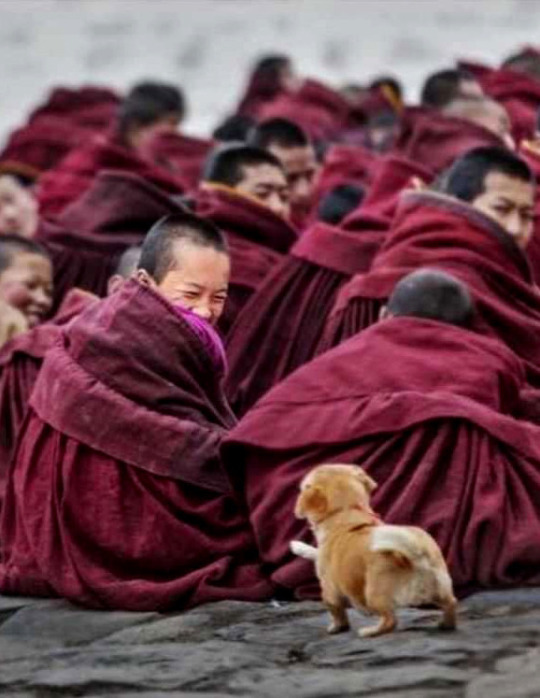
"Birds of a feather flock together. No matter what kind of friend you make, no matter how you associate with that person, you will eventually become like that person. That is what bonding is all about."
- Buddha (Udanavarga 25°I)
#buddha#buddhist#buddhism#dharma#sangha#mahayana#zen#milarepa#tibetan buddhism#thich nhat hanh#green tara#tanric#parinirvana#Padmasambhava#shantideva#amitabha#avalokitesvara#bodhicitta#dakini#dzogchen#heart sutra#guru rinpoche#Bodhisattva#vajrasattva#meditation#medicine buddha#merit#mind training#manjushri#mindfulness
129 notes
·
View notes
Photo
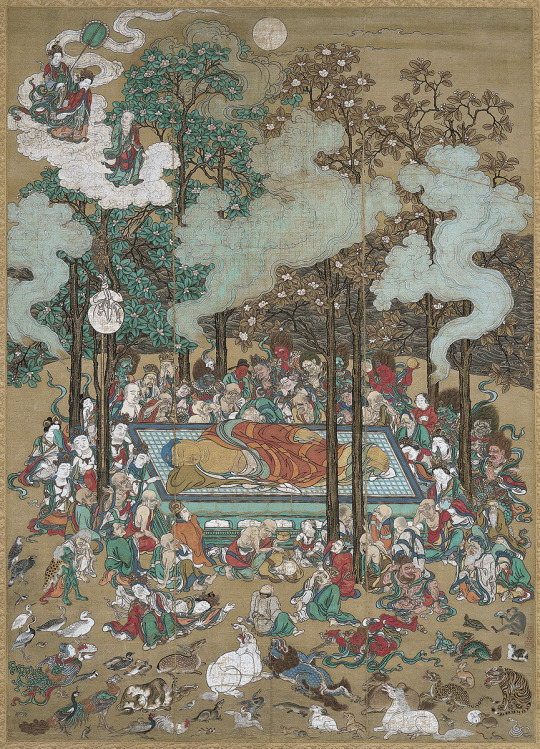
A hanging scroll depicting the buddha Shakyamuni’s parinirvāṇa, or passing away, painted by Hasegawa Tōhaku (長谷川等伯) during the 1570′s at Myōjōji Temple (妙成寺) in Hakui, Ishikawa Prefecture
Image from the temple’s official website
#japanese art#buddhist art#仏涅槃図#parinirvana#釈迦如来#shaka nyorai#shakyamuni#長谷川等伯#hasegawa tohaku#長谷川信春#hasegawa nobuharu#石川県#ishikawa prefecture#羽咋市#hakui#妙成寺#myojoji#日蓮宗#nichiren
40 notes
·
View notes
Photo

The Quest for Buddhism (91)
Early Buddhism and the disciples
Ten Principal Disciples No. 10: Ananda - The First Buddhist Council [So far]
According to the texts, the First Buddhist Council was held in Rajgir. In the first vassa after the Buddha had died, the presiding monk Mahakasyapa (Ref) called upon Ananda to recite the discourses he had heard, as a representative on this council.
Among his disciples, Ananda was the only one to witness Buddha's death in person. Anticipating his own death, Buddha took only Ananda on his last year-long journey from Rajgir to the small town of Kushinagara before he died there.
There was a rule issued that only enlightened disciples (arahants) were allowed to attend the council, to prevent mental afflictions from clouding the disciples' memories. Ananda had, however, not attained enlightenment yet, the Mahakasyapa could not allow him to attend, leaving aside the 499 disciples who had already attained Arhatship.
On the night before the event, he tried hard to attain enlightenment. After a while, Ananda took a break and decided to lie down for a rest. He then attained enlightenment right there, right then, halfway between standing and lying down. The next morning, to prove his enlightenment, Ananda performed a supernatural accomplishment by diving into the earth and appearing on his seat at the council (or, according to some sources, by flying through the air).
Regardless, today, the story of Ananda's struggle on the evening before the council is still told among Buddhists as a piece of advice in the practice of meditation: neither to give up, nor to interpret the practice too rigidly.
Ananda played a crucial role in this council, and texts claim he remembered 84,000 teaching topics, among which 82,000 taught by the Buddha and another 2,000 taught by disciples.
Many early Buddhist discourses started with the words "Thus have I heard" (Skt: Evam maya srutam), which according to most Buddhist traditions, were Ananda's words, indicating that he, as the person reporting the text (Skt: samgitikara, lit: rapporteur), had first-hand experience and did not add anything to it.

十大弟子その十: 阿難 (あなん、梵/巴:アーナンダ・阿難陀) 〜第1回仏典結集(これまで)
釈迦が亡くなってから最初のヴァッサで、議長役の摩訶迦葉 (まかかしょう、梵: マハーカーシャパ)が、この会議の代表として、聞いた説話を朗読するようにとアーナンダを呼び寄せたのである。
ブッダの死に直���立ち会ったのは、弟子の中でアーナンダただ一人であった。自身の入滅を予期していたブッダは、ラージギールからクシナガラという小さな町まで、最後の1年間の旅にアーナンダだけを連れて行き、そこで亡くなった。
この会議には悟りを開いた弟子 (阿羅漢) しか出席できない規則があり、これは精神的な迷いが弟子の記憶を曇らせることを防ぐためである。しかし、アーナンダはまだ悟りを開いていなかったので、マハーカーシャパは、既に阿羅漢を得ている499人の弟子たちをさしおいてアーナンダを出席させることができなかった。
その前夜、彼は悟りを開くために懸命に努力した。しばらくして、アーナンダは一息ついて、横になって休むことにした。すると、立っているときと横になっているときのちょうど中間地点で、その場で悟りを開いたのである。翌朝、アーナンダは悟りを開いたことを証明するために、地中に潜って評議会の席に現れるという超能力を発揮した(あるいは、空中を飛んだという説もある)。
いずれにせよ、アーナンダの前夜の奮闘ぶりは、今日でも仏教徒の間で、「瞑想をあきらめないこと」「瞑想を堅苦しく解釈しないこと」という瞑想修行のアドバイスとして語られている。
アーナンダはこの会議で重要な役割を果たし、仏陀が説いた8万2千の教えと弟子が説いた2千の教えのうち、8万4千の教えを記憶していたと文献に記されている。
初期の仏教説話の多くは「こうして私は聞いた (如是我聞:にょぜがもん)」という言葉で始まっており、多くの仏教伝道によれば、これはアーナンダの言葉であり、報告者として彼が直接経験し何も付け加えなかったことを示す。
#ananda#10 principal disciples#death of buddha#parinirvana#buddhism#the First Buddhist Council#mahakasyapa#evam maya srutam#arhatship#rapporteur#history#philosophy#nature#art
86 notes
·
View notes
Text
Wishing you an auspicious Saka Dawa!!
Happy Saka Dawa!
Saka Dawa is the most important festival in the Tibetan Buddhist world and commemorates the birth, enlightenment, and parinirvana (passing) of Lord Buddha Shakyamuni.
Image taken from Internet
During this month, the merits of good deeds are said to be multiplied one hundred million times. So, if we just commit to avoiding negative thoughts for this month and decide to engage…
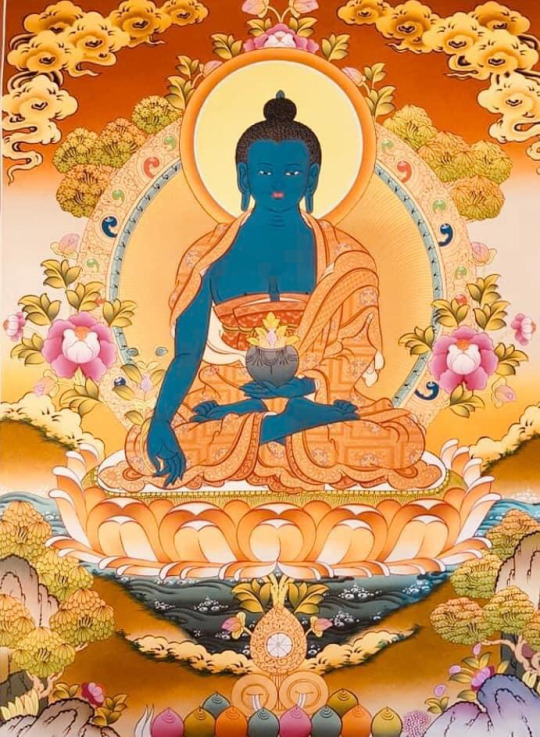
View On WordPress
#Birth#Buddha#Buddha Birthday#Buddha enlightenment#Buddha parinirvana#Buddha Shakyamuni#Buddhism#enlightenment#mahaparinirvana#parinirvana#Raffaello Palandri#Raffaello Palandri Buddhist Master#Saka Dawa#Shakyamuni#Tibetan#Tibetan Buddhism
10 notes
·
View notes
Text
15 février : le Parinirvana du Bouddha
Le Parinirvana est célébré par les adeptes du bouddhisme mahayana, dit du Grand véhicule. C’est-à-dire celui qui est pratiqué en Inde du Nord, où il est né, en Mongolie, au Tibet, Népal mais aussi dans ses variantes chinoises, coréenne et japonaise. Ce Jour du nirvana commémore la mort physique du Bouddha, à l’âge de 80 ans, en 483 avant J.-C., selon la tradition. C’est aussi sa libération du karma, son entrée dans le nirvana complet. Bouddha a quitté le monde de la douleur, de la souffrance physiques et a atteint l'illumination.
La journée est l’occasion de visite au temple. C’est également un jour traditionnel de pèlerinage. On pense que le Bouddha est mort près d’une ville nommée Kushinagar, située dans l’État actuel de l’Uttar Pradesh en Inde. Kushinagar est une destination de pèlerinage majeure le jour du Nirvana. On peut y visiter le stupa et le temple du Nirvana. Le stupa marque l'endroit où les cendres du Bouddha auraient été enterrées. Cette structure contient également une statue populaire de Bouddha couché, représentant le Bouddha mourant. On peut également fréquenter le temple Wat Thai. Celui-ci est considéré comme l'un des plus beaux temples, il a été construit grâce aux dons des bouddhistes thaïlandais et a été ouvert au public en 2001. Enfin, on peut aussi voir le Stupa Ramabhar qui marque l'endroit où le Bouddha aurait été incinéré. Ce stupa est également appelé Mukutbandhan-Chaitya.
Traditionnellement, le Pirinirvana est fêté le 15e jour du deuxième mois lunaire, mais dans beaucoup de lieux comme en Chine, au Japon… on a généralement opté pour le 15 février, la date de loin la plus courante. Mais il peut aussi être célébré le 8 février, voire le 15 mars.
En Asie du Sud-Est, d’autres écoles bouddhistes fêtent le Vesak qui tombe le jour de la première pleine lune du quatrième mois du calendrier lunaire chinois. La date varie d'année en année dans le calendrier grégorien mais se situe généralement en mai.
Un article de l'Almanach international des éditions BiblioMonde, 14 février 2024
0 notes
Photo

Send from Sansgreet Android App. Sanskrit greetings app from team @livesanskrit . It's the first Android app for sending @sanskrit greetings. Download app from https://livesanskrit.com/sansgreet Parinirvana Day. Parinirvana Day, or Nirvana Day is a Mahayana Buddhist holiday celebrated in East Asia. By some it is celebrated on 8 February, but by most on the 15 February. In Bhutan, it is celebrated on the fifteenth day of the fourth month of the Bhutanese calendar. It celebrates the day when the Buddha is said to have achieved Parinirvana, or complete Nirvana, upon the death of his physical body. #sansgreet #sanskritgreetings #greetingsinsanskrit #sanskritquotes #sanskritthoughts #emergingsanskrit #sanskrittrends #trendsinsanskrit #livesanskrit #sanskritlanguage #sanskritlove #sanskritdailyquotes #sanskritdailythoughts #sanskrit #resanskrit #celebratingsanskrit #nirvana #nirvanaday #parinirvana #parinirvanaday #parinirvanadayofthe8thkhamtrulrinpoche #rinpoche #mahayana #mahayanabuddhism #buddhism #buddhist #bhutan #nibbanasutta #buddhisttemple #budha https://www.instagram.com/p/CosK1FoP-zD/?igshid=NGJjMDIxMWI=
#sansgreet#sanskritgreetings#greetingsinsanskrit#sanskritquotes#sanskritthoughts#emergingsanskrit#sanskrittrends#trendsinsanskrit#livesanskrit#sanskritlanguage#sanskritlove#sanskritdailyquotes#sanskritdailythoughts#sanskrit#resanskrit#celebratingsanskrit#nirvana#nirvanaday#parinirvana#parinirvanaday#parinirvanadayofthe8thkhamtrulrinpoche#rinpoche#mahayana#mahayanabuddhism#buddhism#buddhist#bhutan#nibbanasutta#buddhisttemple#budha
0 notes
Text
बाबासाहेब का जीवन, उनका संघर्ष, समाज को शिक्षित और संगठित करने का विचार और उनकी शिक्षाएं प्रत्येक भारतीय के लिए प्रेरक हैं।
देश को एक सर्व-समवेशी संविधान देकर एक प्रगतिशील दिशा देने में उनका योगदान अद्वितीय है। बाबासाहेब के परिनिर्वाण दिवस पर उनको शत्-शत् नमन।
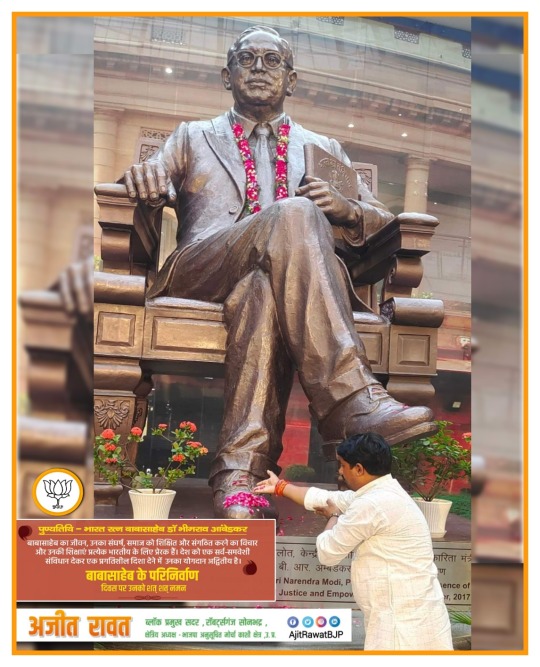

#parinirvana#day#babasaheb#ambedkar#death anniversary#bjp4up#bjpscmorcha#ajitrawatbjp#ajitrawat#bjp4india#sonbhadra#bjp#narendra modi#jpnadda#pm narendra modi#samvidhangauravabhiyan#samvidhandiwas
0 notes
Text
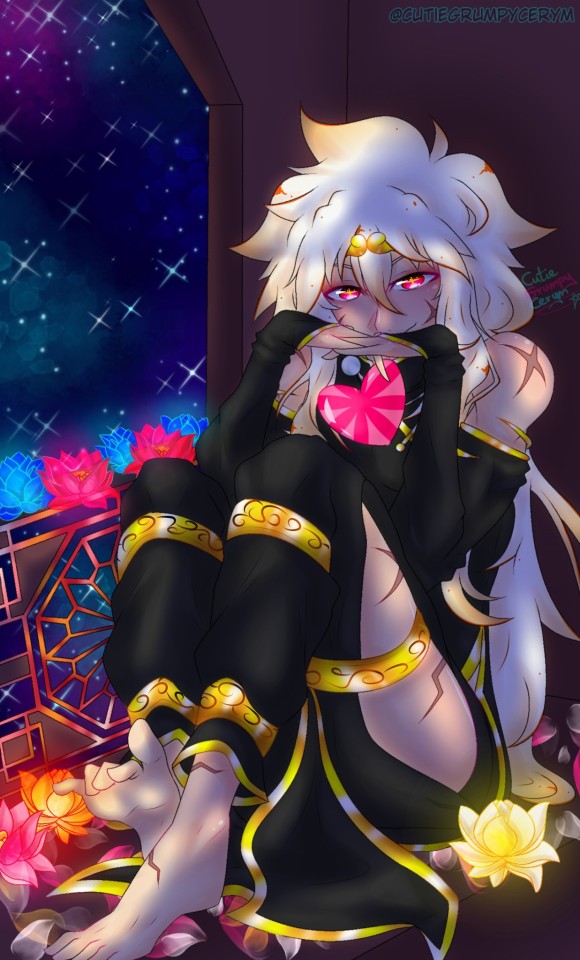
「Happy Birthday, Mori !」 🌸🐒📿
White lotus flowers are associated with spiritual purity and enlightenment, while red lotus flowers are associated with love and compassion. Yellow lotus flowers are associated with mental clarity and wisdom, and blue lotus flowers are associated with serenity and peace.
---------------
Art by me
PLEASE DON'T REPOST, COPY NOR TRACE MY ART !
ASK PERMISSION TO USE IT !
REBLOGS ARE HIGHLY APPRECIATED AND HELPFUL ! ^^
#the god of high school#god of highschool#goh#jin mori#nirvana mori#mori birthday#갓오브하이스쿨#갓오하#ゴッドオブハイスクール#진모리#ジンモリ#goh fanart#anime#fanart#digital art#myart#parinirvana mori
16 notes
·
View notes
Text
Happy Parinirvana day to all those who celebrate!! 🪷
1 note
·
View note
Text


saigyouji parinirvana.
526 notes
·
View notes
Note
I thought about what it would be like if the reader was caught by Hades, Leonidas, Buddha after a few glasses of alcohol and started to let loose on the dance floor dancing Vogue femme style?
A/N: Oh my Greek Pantheon! This was one of my favorite requests ever written before, I may end up making a part two with my favorite characters, now, enjoy~~
●・○・●・○・●・○・●・○・●・○・●・○・●・○・●・○・●・○・●・

●・○・●・○・●・○・●・○・●・○・●・○・●・○・●・○・●・○・●・
💀 He and you were summoned by Zeus for a yearly party to celebrate something, nobody really cared enough to remember
💀 He smiled as he held his wine glass, his tolerance was strong, but yours… was not
💀 He stood off to the side speaking to his nephew, Hermes, about the work he had done while he heard a loud cheer come out of a familiar mouth
💀 Looking up from his glass, he saw you dancing with Shiva and his wives as you smiled and laughed as they twirled you around
💀 He trusted the Head-God with you, and his wives, and seeing your smile and eyes just lit up his dark and bleak soul
💀 You looked at him with your drunker face and waved before coming over and coaxing him into joining
💀 After it all happened, he carried you home before taking a quick shower and resting beside you, it was a night to remember
●・○・●・○・●・○・●・○・●・○・●・○・●・○・●・○・●・○・●・

●・○・●・○・●・○・●・○・●・○・●・○・●・○・●・○・●・○・●・
🚬 The Gymnopaedia, an annual party to celebrate Spartan Identities
🚬 It was something that Leonidas enjoy to do, but because S/Os were now involved, specifically his S/O, he would tell the men to cover themselves up
🚬 He didn’t need you to see all that going around
🚬 Leonidas watched as the many men and women drank and began to dance around like wild animals, and he just smirked, knowing this was going to hit them in the ass the next morning
🚬 When he looked up from his wine and saw that you were dancing around with his army mens’ wives, he started to lightly chuckle
🚬 You were so lightweight when it came to drinking compared to him
🚬 Your husband started to really laugh when you spun around him and started dragging him out to dance an annual war dance, with his army, and when he did, you sat there with the mens’ wives and gawked at how amazing your husbands were
🚬 Once it ended, he took you home and just laid in bed with you
🚬 He wasn’t forgetting this night for a while
●・○・●・○・●・○・●・○・●・○・●・○・●・○・●・○・●・○・●・

●・○・●・○・●・○・●・○・●・○・●・○・●・○・●・○・●・○・●・
🍭 He watched over his followers as they celebrated Nirvana Day, or Parinirvana Day, as some preferred
🍭 Buddha watched as you came up to him with a bottle of spiked juice as you began to dance with him as his followers started to prance around
🍭 Now, he isn’t exactly the strongest drinker, but he didn’t drink that often, so it’s safe to say he had one glass of the spiked drink before moving to the Strawberry Limeade
🍭 Your laughing was something he could pick up like nothing, so hearing it made him laugh himself
🍭 You connected with his people so well, it was so great!
🍭 When you come up to him and coaxed him onto the floor with you, you just danced your hearts out, and he eventually had to keep you away from the alcoholic beverages, as you’d probably pass out if you had anymore
#Record of Ragnarok#RoR#Shuumatsu no Valkyrie#SnV#RoR Dharmic/Buddhism Pantheon#RoR Greek Pantheon#Record of Ragnarok Gods#RoR Gods#Record of Ragnarok Humans#RoR Humans#Record of Ragnarok x Reader#RoR x Reader#Shuumatsu no Valkyrie x Reader#SnV x Reader#RoR Greek Pantheon x Reader#RoR Dharmic/Buddhism Pantheon x Reader#Record of Ragnarok Gods x Reader#RoR Gods x Reader#RoR Humans x Reader#Record of Ragnarok Humans x Reader#S/O! Reader#GN! Reader#RoR Hades#RoR Hades x Reader#RoR Leonidas#RoR Leonidas x Reader#RoR Buddha#RoR Buddha x Reader
94 notes
·
View notes
Text
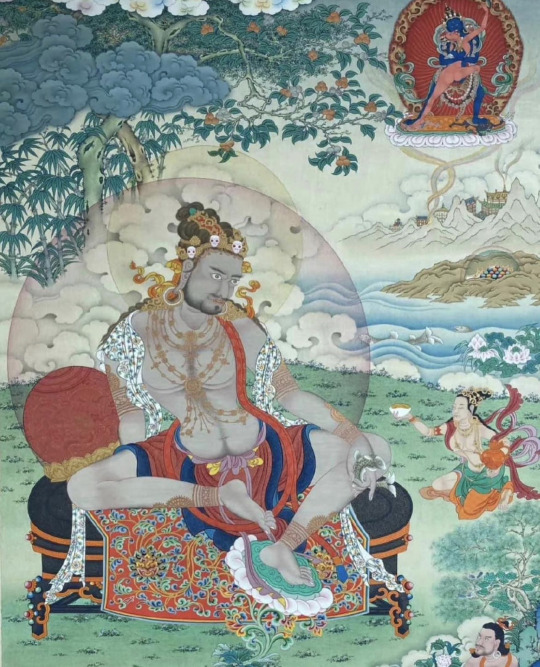
"Allow the polluted water of thoughts to clear.
Neither negate nor affirm appearances, leave them as they are.
If there is no rejecting or accepting, appearances and possibilities liberate as the Mahamudra."
Mahasiddha Tilopa
From: Mahamudra Upadesha (The Pith Instructions on the Great Seal / The Ganges Mahämudrã)
#buddha#buddhist#buddhism#dharma#sangha#mahayana#zen#milarepa#tibetan buddhism#thich nhat hanh#tanric#inner peace#pranayama#parinirvana#Padmasambhava#Avalokiteshvara#amitaba buddha#Shantideva#dalai lama#Dzogchen#guru rinpoche#medicine buddha#bodhicitta#bodhisattva#meditation#mindfulness#mind training
20 notes
·
View notes
Photo

A reclining image of the Buddha Shakyamuni (釈迦如来 Shaka Nyorai) passing away into parinirvāṇa dating to the Kamakura period (1185-1333) at Anaoji Temple (穴太寺) in Kameoka, Kyoto Prefecture, of somewhat mysterious provenance as it was found above the temple’s ceiling in 1896
Photo by 森の京都 [Mori no Kyoto], 2022
#buddhist temple#japanese art#buddhist art#京都府#kyoto prefecture#亀岡市#kameoka#穴太寺#anaoji#釈迦如来#釈迦#shaka nyorai#shakyamuni#shakyamuni buddha#parinirvana
28 notes
·
View notes
Text
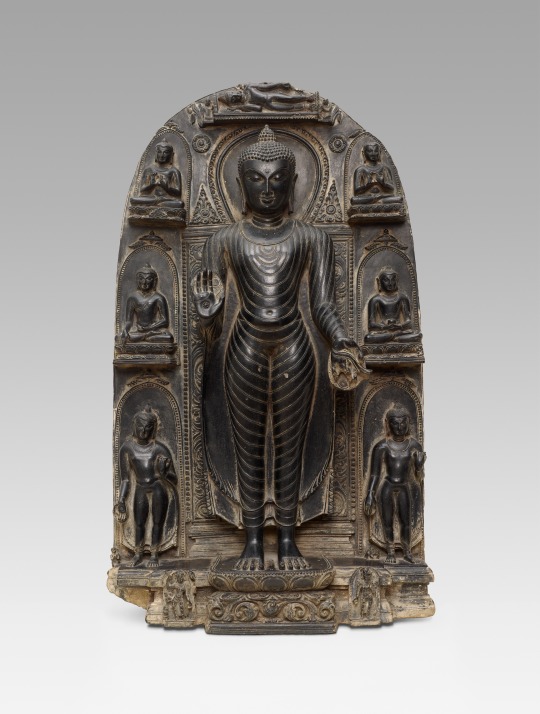
Eight Great Events from the Life of the Buddha
India, Pala period, 10th century
Narrative events are depicted on all sides of this stele. A miniaturized scene at the lower left of the base, below the central Buddha’s feet, shows his miraculous birth from his mother’s side. Above this is the Buddha’s descent from heaven, where he went to preach to his dead mother, and farther up, the moment of his enlightenment, with his proper right hand touching the earth to witness. The upper left scene depicts his first sermon at the Deer Park in Sarnath.
On the right side are scenes representing the miracles that the Buddha performed at Shravasti, including the gift of honey from a monkey—shown in miniature at the lower right corner of the platform near his gift-giving hand—and the Buddha’s taming of a wild elephant, by his left foot. The scene of the parinirvana tops the stele: the Buddha’s life flame is extinguished as he reaches nirvana.
29 notes
·
View notes
Text
Happy Lhabab Düchen!
Today the Buddhists following the Tibetan tradition celebrate Lhabab Düchen ( ལྷ་བབས་དུས་ཆེན་).
Lhabab Düchen is one of the four Buddhist festivals commemorating four events in the life of the Buddha (the other three are: Losar Festival, Saga Dawa Festival, Chokor Duchen Festival), in the Tibetan Buddhist tradition, that I follow.
Lhabab Düchen occurs on the 22nd day of the ninth lunar month…
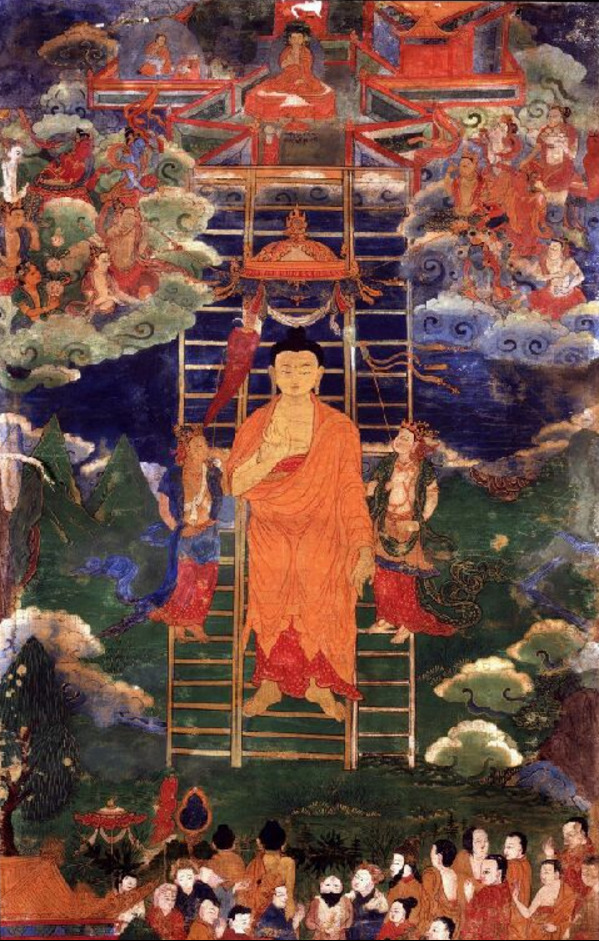
View On WordPress
#Bhutan#Buddha&039;s Death#Buddha&039;s death Parinirvana#Buddhism#Celebration#Earth#heaven#Indra#Indra’s heaven#Laos#Lhabab Düchen#Maudgalyayana#Mayadevi#Miracle at Sravasti#Myanmar#Nalagiri#parinirvana#Sri Lanka#Tavatimsa#Thailand#the Birth of the Buddha#the Descent from Tavatimsa Heaven#the Enlightenment#the First Sermon#the Monkey&039;s offering of honey#the Taming of Nalagiri the elephant#Tibet#Tibetan Buddhism#triple ladder#Viswakarma
7 notes
·
View notes
Photo

Legends and myths about trees
Trees in Buddhism (3)
Sal tree (Shorea robusta) – the Nirvana
In Buddhism, there is an important day called 'Sanbutsuki (3 anniversaries of the Buddha)', which commemorates three major milestones in the Buddha's life.
These are Buddhist rituals of the Nativity on 8 April, when Buddha was born, the Jodo-e (becoming a Buddha) on 8 December, when he attained enlightenment, and the Nirvana on 15 February, when he passed away.
The Buddha's death is believed to have occurred on 15 February of the lunisolar calendar in China and Japan, and in many places it is now held on 15 March.
According to Buddhist tradition, the Buddha was lying between a pair of sal trees when he died:
Then the Blessed One with a large community of monks went to the far shore of the Hiraññavati River and headed for Upavattana, the Mallans' sal-grove near Kusinara. On arrival, he said to Ananda (Ref1), the chosen disciple, "Ananda, please prepare a bed for me between the twin sal-trees, with its head to the north. I am tired, and will lie down. (DN16; Nirvana Sutra)"
When the Buddha died in Kusinara, there were 4 or 8 sal trees on the 4 corners of his bed. They were said to have bloomed at the same time, then quickly withered and turned white, just like a flock of cranes.
In Buddhism, the brief flowering of the sal tree is used as a symbol of impermanence and the rapid passing of glory. The sal tree is also said to have been the tree under which Kondana and Vessabhu, respectively the fifth and twenty fourth Buddhas preceding Gautama Buddha, attained enlightenment.
The sal tree (shorea robusta, sāla, shala, sakhua, or sarai), is a species of tree in the family Dipterocarpaceae. The tree is native to India, Bangladesh, Nepal, Tibet and across the Himalayan regions.
The sal tree is mythologically classified as a 'tree of life', symbolising resurrection, rebirth and rejuvenation, but in Buddhism it is one of the three most sacred trees, symbolising parinirvana, as the Buddha died under two sal trees in a row.
The three most sacred Buddhist trees are:
Ashoka tree: the tree where the Buddha was born (Ref).
Bodhi tree: the tree where the Buddha attained enlightenment
Sal tree: the tree where the Buddha died.
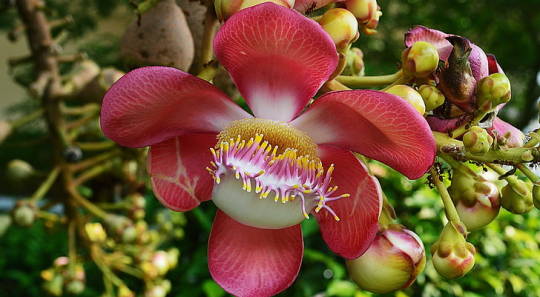
木にまつわる伝説・神話
仏教の樹木 (2)
沙羅双樹 (サラソウジュ) 〜涅槃会 (ねはん���)
仏教には、ゴータマ・ブッダの生涯における3つの大きな節目を記念する「三仏忌 (さんぶつき)」という大切な日がある。
それが、ブッダが生まれた4月8日の降誕会 (こうたんえ)、悟りを開いた12月8日の成道会(じょうどうえ)、そして入滅した2月15日の「涅槃会(ねはんえ)」。
ブッダの入滅は中国や日本では旧暦2月15日とされ、現在は3月15日に行なわれているところが少なくない。
また、仏教の伝統によると、ブッダは入滅したとき、一対の沙羅双樹 (サラソウジュ) の間に横たわっていた。
その後、大勢の僧侶たちの中から選ばれたアーナンダ(参照1)はヒラニャーヴァティ川の向こう岸に行き、クシナラ近くのマッラ族の沙羅樹の林、ウパヴァッタナへ向かった。到着すると、ブッダはアーナンダに言った。「アーナンダ、2対の沙羅双樹 (サラソウジュ) の間に、頭を北に向けた寝床を用意してください。私は疲れているので、横になります。(DN16; 大般涅槃経)」
ブッダがクシナガラで死去したとき、臥床の四辺に4双8本の沙羅双樹 (サラソウジュ)があった。時じくの花を咲かせ、たちまちに枯れ、白色に変じ、さながら鶴の群れのごとくであったという。
仏教では、沙羅双樹 (サラソウジュ)の木の短い花は、無常と栄光の急速な通過の象徴として使用されることもある。また、沙羅双樹 (サラソウジュ) は、ゴータマ・ブッダに先立つ5番目の仏陀であるコーナニャーと24番目の仏陀であるヴェッサブーが悟りを開いた木であると言われている。
沙羅双樹 (サラソウジュ)はフタバガキ科の樹木の一種で、インド、バングラデシュ、ネパール、チベット、ヒマラヤ地方に自生している。
沙羅双樹 (サラソウジュ)は神話学的には復活・再生・若返りの象徴である「生命の木」に分類されるが、仏教では二本並んだ沙羅の木の下で釈尊が入滅したことから般涅槃の象徴とされ、仏教三大聖樹のひとつである:
無憂樹: 釈迦が生まれた所にあった樹木(参照)
印度菩提樹:釈迦が悟りを開いた所にあった樹木
娑羅双樹:釈迦が亡くなった所にあった樹木
#trees#tree legend#tree myth#trees in buddhism#sal tree#buddha#nirvana#ananda#buddhist rituals#philosophy#nature#art#sacred trees
167 notes
·
View notes